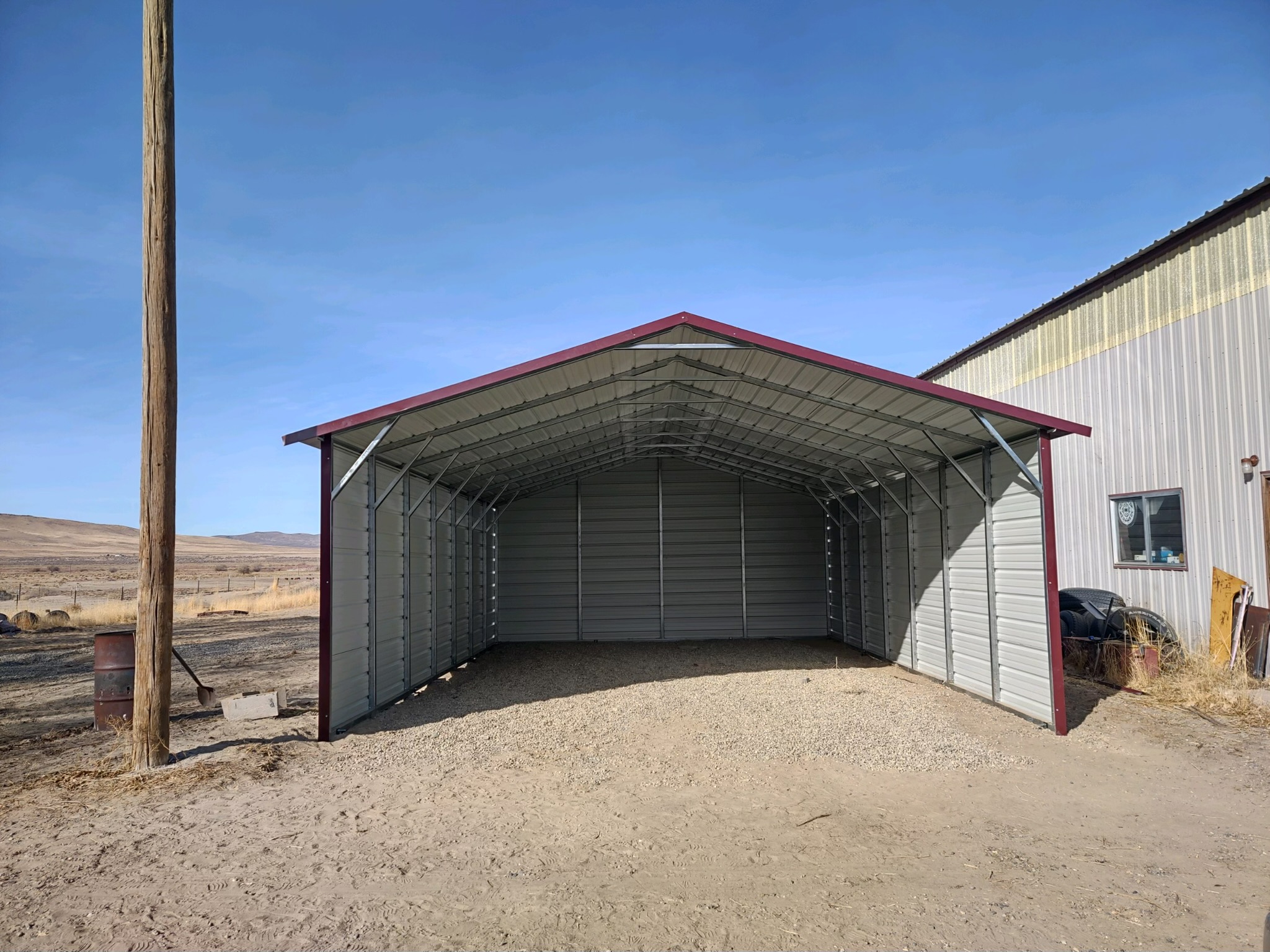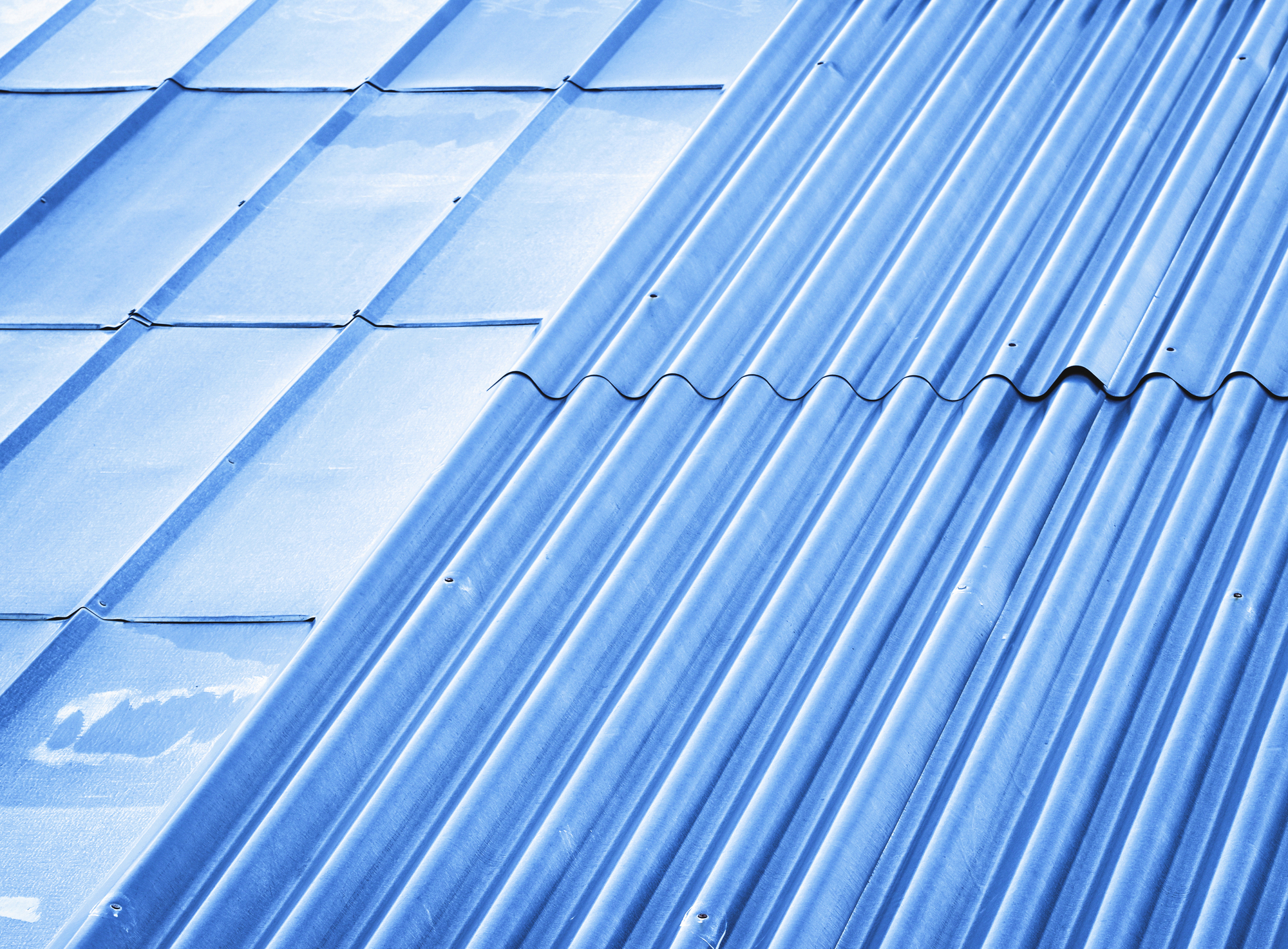



Commercial Metal Buildings
Commercial metal buildings, which combine sustainability, adaptability, and durability, represent an important change in modern corporate architecture. Crafted from sturdy steel or aluminum, these constructions have come to represent creative thinking and effective operation.
Commercial metal structures provide a flexible canvas on which enterprises can express their operating needs, ranging from large warehouses and manufacturing facilities to modern office buildings and retail areas. Because of their innate strength, which guarantees long-lasting durability, a stable and safe environment is created for a variety of commercial activities.
The versatility of commercial metal buildings is one of its key characteristics. These structures offer large open areas, clear spans, and the ability to include contemporary amenities. They can be tailored to fit individual design requirements.
Commercial metal buildings are beneficial to sustainable construction techniques in addition to their structural strength. Their utilization of recyclable materials and integration of energy-efficient features conform to environmentally conscious trends, rendering them a conscientious option for enterprises aiming to reduce their ecological footprint.
Commercial metal buildings, which provide the ideal balance of durability, flexibility, and environmental responsibility, essentially serve as markers of advancement in the corporate world.
These buildings lay the foundation for a new architectural age that emphasizes longevity, efficiency, and peaceful coexistence with the environment as enterprises continue to change.
Additionally, the timely and efficient construction of commercial metal buildings is greatly dependent on them. Reduced labor costs and accelerated project timeframes are the results of the construction process’ efficiency, which frequently includes pre-engineered components and faster assembly.
The robustness of the finished structure is advantageous to businesses, but they also gain from the expedited construction process that reduces downtime.
Commercial metal buildings can be expanded upon or used for other purposes in the future due to their versatility. Their flexibility makes additions and alterations easier, giving companies a long-term, scalable solution that can change to meet their evolving demands.
Because of its innate adaptability, commercial metal structures are a wise investment that provides a viable and affordable solution for companies trying to manage the risks associated with expansion and changing operational needs.
In the field of business architecture, commercial metal buildings are models of efficiency and inventiveness. These buildings’ robustness, versatility, and environmentally friendly qualities not only satisfy organizations’ present needs but also establish them as progressive solutions that foresee and fulfill future requirements.
In a time when companies value economy and sustainability above all else, commercial metal buildings become iconic constructions that completely alter the face of contemporary business.

Commercial Metal Building Prices
Understanding the many components that go into the final cost of a commercial metal building is essential for navigating the confusing world of commercial metal building prices. Factors including size, personalization, materials, and other amenities affect the cost of these buildings. Costs are inevitably higher for larger buildings because of the greater material requirements and complexity of construction.
Customization choices, such as particular insulation or design elements, raise total costs but offer specialized solutions to address certain company requirements. Choosing aluminum or steel as the primary material also affects the cost, with steel usually being more expensive due to its greater robustness.
Moreover, adding features like cutting-edge ventilation systems, energy-saving parts, or unique coatings could improve overall performance but increase the project’s costs.
Long-term returns on investment must be taken into account to fully comprehend the economic aspects of commercial metal building prices. Metal buildings can be expensive up front, but over time they can save a lot of money because of their longevity and low maintenance needs.
The cost of commercial metal buildings ultimately represents a careful balancing act between personal preferences, urgent financial constraints, and the strategic investment in a long-lasting, reliable corporate asset.
Apart from the initial concerns, it is imperative to acknowledge the economic viability of commercial metal buildings throughout their existence. Long-term savings are ensured by their reduced need for repairs in comparison to standard construction materials and their endurance, which drastically lowers maintenance costs.
The building process’s efficiency, which frequently involves pre-engineered components and quicker assembly, minimizes business disruptions by lowering labor costs and accelerating project completion.
Moreover, the economic feasibility of commercial metal buildings is significantly influenced by their versatility and expandability. The initial outlay establishes the framework for a system that is easily expandable or modifiable in the future to meet changing business requirements.
Commercial metal structures are now more than simply a one-time purchase—rather, they are a strategic investment that expands and changes with the business thanks to their versatility, which improves the total value offer.
In short, although the cost of commercial metal buildings may necessitate a careful upfront investment, their long-term financial benefits make them an excellent option for companies seeking cost effectiveness, toughness, and flexibility.
The long-term benefits that these pricing structures provide to the company are included in the comprehensive understanding of pricing dynamics, in addition to the upfront expenses.

Are metal studs required in commercial buildings?
Due to its numerous advantages that enhance the project’s overall efficiency and structural integrity, metal studs are now frequently used in the construction of commercial structures.
Because of their exceptional strength and longevity, metal studs are a highly recommended option for framing since they guarantee that the building can support large loads and resist deformation over time. Metal studs also provide improved fire resistance, which is important in commercial situations where safety regulations are strict.
In addition to being sturdy, metal studs offer a level of accuracy and uniformity in buildings that is difficult to accomplish with conventional wooden studs. Due to its accuracy, installation procedures can be completed more quickly and effectively, which helps to keep projects on schedule.
Moreover, metal studs guarantee the lifespan of the building’s framework because they are impervious to problems like rot, warping, and termite damage.
Although the use of metal studs in commercial construction may not always be required by local building rules, their widespread use is due to the clear benefits they offer.
To ensure the endurance and safety of commercial structures, metal studs have become an essential component of modern construction, offering advantages such as strength, fire resistance, precision, and longevity.
Furthermore, the adaptability of business areas is greatly enhanced by the variety of metal studs. Greater architectural design flexibility is made possible by a metal frame, which makes it easier to integrate contemporary building systems like plumbing and electrical installations and to create open floor designs.
This flexibility allows for layout or functionality modifications in response to changing company needs, which is consistent with the dynamic and ever-evolving nature of commercial contexts.
The environmental sustainability provided by metal studs is another important factor. Because they are recyclable, they support green building techniques by lowering the need for fresh resources and cutting down on waste from construction. This is consistent with the growing focus on environmentally friendly building solutions and sustainable construction techniques.

Clear-span metal buildings
The possibilities of open and unobstructed interior spaces in construction are redefined by clear-span metal buildings, thanks to their inventive design and superior structural capability. These constructions, which maximize usable floor area, are characterized by the absence of interior columns or support systems and have spacious, flexible interiors.
Clear-span metal buildings are incredibly versatile and perfect for a wide range of industries, such as manufacturing plants, sports arenas, and warehouses. The lack of columns permits efficient movement and storage of equipment or commodities within the area in addition to offering designers more creative license when creating effective layouts.
The utilization of sturdy materials like steel and sophisticated engineering is responsible for the structural integrity of clear-span metal buildings. These buildings are not only long-lasting and durable, but they can also survive a variety of weather situations thanks to their design. Furthermore, the lack of interior support streamlines the building process, which frequently results in speedier assembly and lower costs.
At their core, clear-span metal structures are examples of how modern architecture has developed, providing companies and organizations with the chance to design large, flexible, and effective facilities that easily accommodate their present and future needs. These buildings are the epitome of structural architectural creativity, whether they are used as warehouses, industrial facilities, or recreational areas.
Moreover, the adaptability of clear-span metal structures’ designs facilitates the incorporation of diverse modification choices, meeting particular industry demands. Interior columns do not restrict businesses from incorporating additional levels, office areas, or specialized storage systems.
This flexibility not only improves functionality but also ensures that the structure is future-proof by meeting changing operational requirements.
Energy-efficient clear-span metal structures also perform very well because of their large roof areas, which make it easy to install solar panels or effective insulation. In addition to being in line with sustainable building methods, this can also result in long-term financial savings and less environmental impact.
Clear-span metal buildings are a great option for industries like sports and events since they let huge arenas be built and give spectators unhindered views. The interiors are immersive due to their open layout and lack of columns, which improves the occupants’ overall experience.
Beyond being architectural marvels, clear-span metal buildings have useful benefits across a range of industries. Their broad acceptance can be attributed to their versatility, effectiveness, and sustainability, which makes them the go-to alternative for innovative construction solutions where space efficiency, robustness, and creative flexibility are critical factors.

Do commercial buildings have insulation on metal roofs?
For commercial buildings with metal roofs, insulation is an essential component that improves overall structural performance, comfort, and energy efficiency. Although installing insulation is not necessary for all business buildings with metal roofs, it is strongly advised for several useful reasons.
By limiting heat transmission, insulation aids in the regulation of interior temperatures. This is particularly crucial in areas with significant temperature swings. Decreasing the need for excessive heating or cooling helps conserve energy and lowers utility bills.
Additionally, insulation helps to prevent condensation in commercial buildings with metal roofs. Temperature-related condensation is a common problem with metal roofs; however, by keeping the building envelope at a constant temperature, insulation can help minimize this problem. This shields the roof’s structural integrity and wards against possible moisture-related issues like corrosion and mold growth.
Although installing insulation is a prudent investment that pays off in terms of energy efficiency, climate management, and the long-term health of the building structure, it may not be required for all commercial buildings with metal roofs. It is in line with contemporary building techniques that have an emphasis on occupant comfort, sustainability, and operating cost-effectiveness.
In addition to its obvious advantages, insulation makes the interior spaces of commercial buildings with metal roofs cozier and more efficient. Insulation maintains a constant and comfortable environment for residents, optimizing temperature swings and mitigating the effects of outside weather, which promotes worker happiness and efficiency.
Insulation also helps with sound absorption, reducing noise from hail, rain, and other outside elements that could damage a metal roof. This acoustic benefit is especially important in business settings where a calm and concentrated workspace is necessary.
Insulated metal roofs are in line with green building techniques as environmental awareness rises. Through promoting sustainability and optimizing energy usage, they assist businesses in lowering their carbon footprint.
Insulation in commercial buildings is now either encouraged or mandated by many local building codes and energy efficiency regulations, underscoring the significance of this component in contemporary construction methods.
Although it’s not always required, adding insulation to commercial buildings with metal roofs is a wise move for companies looking to maximize energy efficiency, guarantee occupant comfort, and create a more robust and sustainable built environment.
Examining the field of commercial metal buildings reveals that these constructions have a significant role in influencing contemporary corporate architecture. When metal is used in commercial buildings for roofing, framing, or complete structures it represents a dedication to efficiency, versatility, and longevity.
With their open interiors devoid of columns, clear-span metal structures are unique examples of innovation that provide businesses with large, adaptable spaces. The debate over whether metal studs are necessary for commercial structures highlights how widely acknowledged their superior strength, accuracy, and sustainability are.
Examining commercial metal buildings and other subjects highlights an important change in building methods. Metal constructions are becoming more and more popular in the commercial sector due to their strong design options, affordability, and environmental conscience.
Commercial metal structures become increasingly important in determining the direction of modern design and construction as corporations place a higher priority on sustainability, robustness, and efficiency.
Contact National Star Carport today and get started on your commercial metal building!
